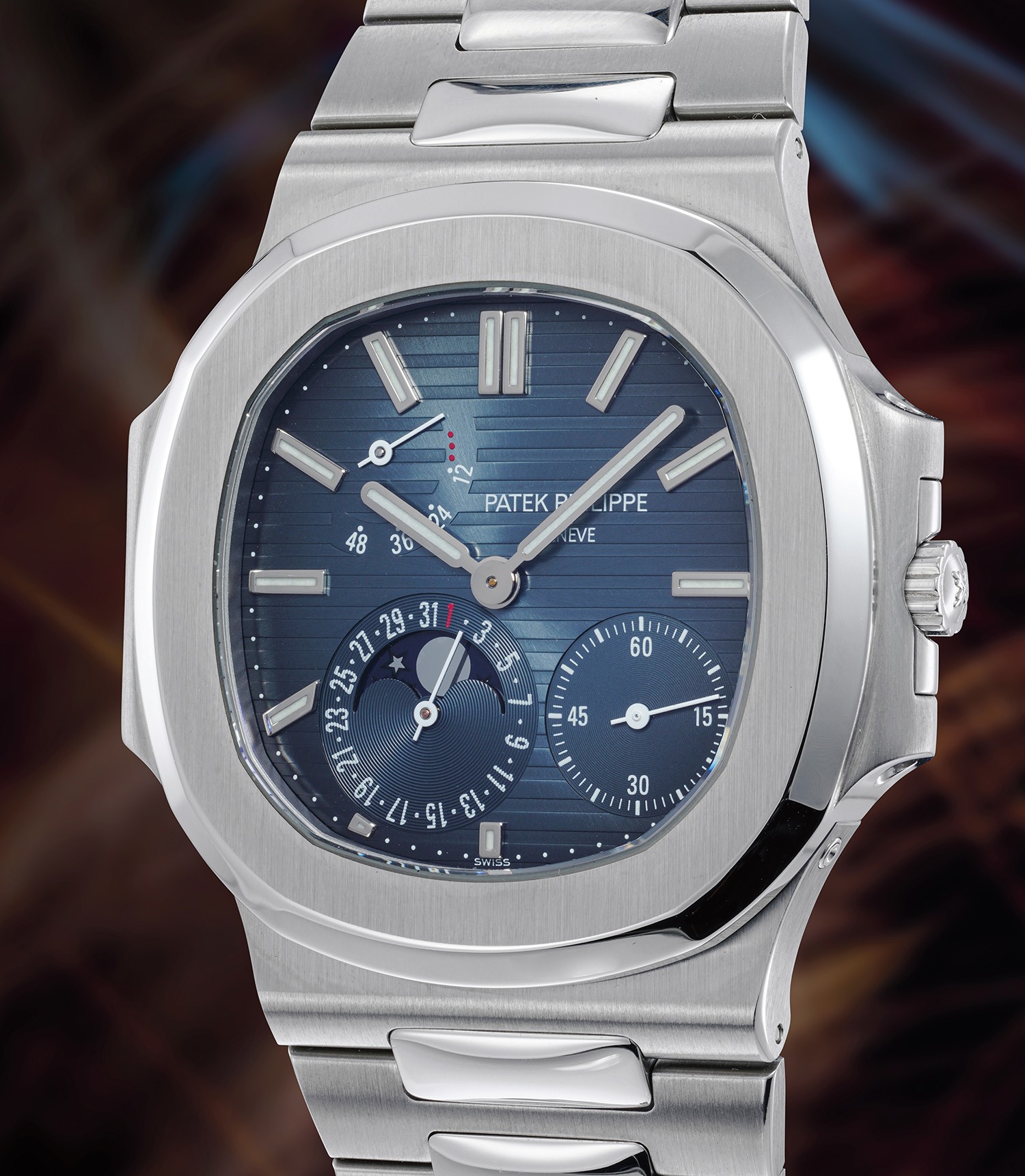





181
Patek Philippe
Ref. 3712/1A
Nautilus
A fine and very rare stainless steel automatic wristwatch with moonphases, date, power reserve, bracelet, certificate of origin and presentation box
Full-Cataloguing
When analysing Patek Philippe products, it becomes apparent that the company usually presents less evolutions to its watch designs, both in terms of update frequency and of intensity as well, than other brands. Once a model is presented, its design tends to remain the same for its entire production. Sometimes small changes are applied (such as in the case of the three series of reference 5270) but in general terms Patek Philippe designs are more “monolithic” than other companies. This is why reference 3712 can be considered an absolute outlier and unarguably the modern Patek Philippe reference with the shortest and strangest production run of them all, which explains its enormous collectability.
Patek Philippe introduced reference 3712/1A in 2005, and it remained in production for approximately one year – some estimate as few as eight months - before being succeeded by ref. 5712 in 2006. The model was at the time of its launch the first truly complicated Nautilus, the date and moonphases notable upgrades from the power reserve complication of earlier ref. 3710. The letters following the official name of the self-winding caliber 240 – PS IRM C LU – stand for "petites secondes" (small seconds), "indication de réserve de marche" (power reserve), "calendrier" (date), and "lune" (moon). When presented to the public, the highly asymmetric disposition of these functions on the dial raised more than an eyebrow, but the design - adopted nearly identical by ref. 5712 as well - has proven to be most successful.
At first glance, ref. 3712 appears quite similar to ref. 5712, but there are many noteworthy differences when the watches' details are examined. Most notably, the 3712 has a slightly smaller case measuring 42 mm in diameter as it is constructed using only two pieces compared with the more rounded, three piece, 42.5mm case of the 5712.
The dial of the reference 3712 features wider grooves, or channels, and different hour markers than its successor. The most apparent difference is however that the date ring is smaller in reference 3712 allowing for the presence of a tiny 7 o’clock marker, absent in ref. 5712.
The dial is the setting for another quirk of this reference: not only its less-than-a-year production run is simply baffling, but it furthermore features an evolution during this short time, with two recognised series.
- First series models, such as the present one, present three red dots in the power reserve indicator
- Second series examples feature 4 dots, same as reference 5712.
Such an unusual production history denotes how Patek Philippe was at the time making its first forays into the realm of complicated sport watches, and thus was incrementally adjusting the design of the piece.
Patek Philippe
Swiss | 1839Since its founding in 1839, this famous Geneva-based firm has been surprising its clientele with superbly crafted timepieces fitted with watchmaking's most prestigious complications. Traditional and conservative designs are found across Patek Philippe's watches made throughout their history — the utmost in understated elegance.
Well-known for the Graves Supercomplication — a highly complicated pocket watch that was the world’s most complicated watch for 50 years — this family-owned brand has earned a reputation of excellence around the world. Patek's complicated vintage watches hold the highest number of world records for results achieved at auction compared with any other brand. For collectors, key models include the reference 1518, the world's first serially produced perpetual calendar chronograph, and its successor, the reference 2499. Other famous models include perpetual calendars such as the ref. 1526, ref. 3448 and 3450, chronographs such as the reference 130, 530 and 1463, as well as reference 1436 and 1563 split seconds chronographs. Patek is also well-known for their classically styled, time-only "Calatrava" dress watches, and the "Nautilus," an iconic luxury sports watch first introduced in 1976 as the reference 3700 that is still in production today.